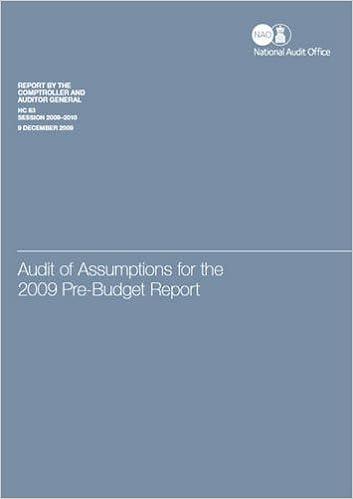Question
Entity F issued 3,000 shares of its $1 par value common stock for $7 per share. Which of the following statements is correct? Cash should
Entity F issued 3,000 shares of its $1 par value common stock for $7 per share. Which of the following statements is correct?
| Cash should be debited for $18,000. | ||
| Paid-in-capital-in-excess-of-par-value should be debited for $18,000. | ||
| Common stock should be credited for $21,000. | ||
| Common stock should be credited for $3,000. |
All of the following are correct regarding stock dividends except:
| they are not taxable to the shareholders | ||
| they are paid in cash. | ||
| they usually result in a decrease in the stock price. | ||
| total stockholders equity is the same before and after the stock dividend. |
The most important category on the statement of cash flows to determine whether an entity is likely to continue as a going concern is:
| operating activities. | ||
| financing activities. | ||
| significant noncash activities | ||
| investing activities. |
Entity G had the following accounts: Common stock, $1 par, 1,000 shares authorized, 750 shares issued, 700 shares outstanding $ 750 Paid-in-capital in excess of par 37,500 Treasury stock (50 shares at cost) 3,000 Accumulated other comprehensive income 1,000 Retained earnings 250,000 What is Total Stockholders Equity?
| $292,250 | ||
| $285,250 | ||
| $286,250 | ||
| $250,750 |
Regarding its common stock, Entity H has 1,000,000 authorized shares, 650,000 issued shares, and 20,000 treasury shares that it recently purchased. What is the number of outstanding shares?
| 1,000,000 | ||
| 630,000 | ||
| 650,000 | ||
| 350,000 |
Most companies pay current liabilities
| by issuing stock. | ||
| by creating other current liabilities. | ||
| by issuing bonds payable. | ||
| out of current assets, i.e. cash. |
Regular cash dividends on common stock reduce the companys
| Paid-in-capital in excess of par. | ||
| Common stock. | ||
| Treasury stock. | ||
| Retained earnings. |
When bonds are issued at a premium, the total interest cost of the bonds over the life of the bonds is:
| interest paid over the life of the bond. | ||
| interest paid over the life of the bonds minus the amount of the premium at the sale point. | ||
| interest paid over the life of the bonds plus the amount of the premium at the sale point. | ||
| premium at the sale point. |
Step by Step Solution
There are 3 Steps involved in it
Step: 1

Get Instant Access to Expert-Tailored Solutions
See step-by-step solutions with expert insights and AI powered tools for academic success
Step: 2

Step: 3

Ace Your Homework with AI
Get the answers you need in no time with our AI-driven, step-by-step assistance
Get Started


